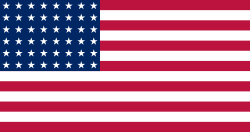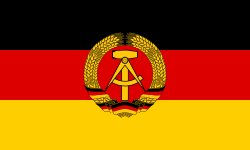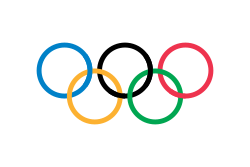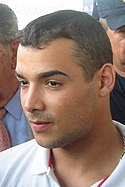Gervasio Deferr
| Gervasio Deferr | |
|---|---|
 Gervasio Deferr (25. srpna 2004) | |
| Osobní informace | |
| Datum narození | 7. listopadu 1980 (43 let) |
| Místo narození | Premià de Mar |
| Některá data mohou pocházet z datové položky. | |
| Přehled medailí | ||
|---|---|---|
| zlato | 2000 Sydney | přeskok |
| zlato | 2004 Athény | přeskok |
| stříbro | 2008 Peking | prostná |
| Mistrovství světa ve sportovní gymnastice | ||
| stříbro | 1999 Tiencin | prostná |
| stříbro | 2007 Stuttgart | prostná |
Gervasio Deferr Ángel (* 7. listopadu 1980 Premià de Mar) je bývalý španělský sportovní gymnasta. Gymnastice se věnoval od pěti let a kariéru ukončil v roce 2011.
Je dvojnásobným olympijským vítězem v přeskoku z let 2000 a 2004.[1] V prostných byl na LOH 2004 čtvrtý a na LOH 2008 druhý. Na mistrovství světa ve sportovní gymnastice získal stříbrné medaile v prostných v letech 1999 a 2007. Druhé místo obsadil také na MS 2002, byl však dodatečně diskvalifikován po pozitivním testu na marihuanu.[2] V roce 2000 vyhrál finále světového poháru v přeskoku a byl vicemistrem Evropy v prostných.
V roce 2000 získal spolu s cyklistou Joanem Llanerasem cenu pro španělského sportovce roku. Byl mu udělen Královský řád za sportovní zásluhy.
Jako trenér vedl olympijského medailistu Rayderleye Zapatu. Vystupoval v televizních soutěžích Splash! Famosos al agua a Ninja faktor. V roce 2017 podstoupil protialkoholní léčení.[3]
Reference
- ↑ Diario AS Dostupné online
- ↑ El País Dostupné online
- ↑ Las Provincias Dostupné online
Externí odkazy
 Obrázky, zvuky či videa k tématu Gervasio Deferr na Wikimedia Commons
Obrázky, zvuky či videa k tématu Gervasio Deferr na Wikimedia Commons - Gervasio Deferr v databázi Olympedia (anglicky)
- The Sports
Média použitá na této stránce
Olympic Rings without "rims" (gaps between the rings), As used, eg. in the logos of the 2008 and 2016 Olympics. The colour scheme applied here was specified in 2023 guidelines.
Olympic Rings without "rims" (gaps between the rings), As used, eg. in the logos of the 2008 and 2016 Olympics. The colour scheme applied here was specified in 2023 guidelines.
Flag of the Germans(1866-1871)
US Flag with 45 stars. In use 4 July 1896–3 July 1908. Created by jacobolus using Adobe Illustrator, and released into the public domain. This flag was used during the Spanish-American War.
US Flag with 45 stars. In use 4 July 1896–3 July 1908. Created by jacobolus using Adobe Illustrator, and released into the public domain. This flag was used during the Spanish-American War.
US Flag with 48 stars. In use for 47 years from July 4, 1912, to July 3, 1959.
Autor: F l a n k e r, Licence: CC BY-SA 2.5
Flag of the Kingdom of Sardinia (1851-1861) and of the Kingdom of Italy (1861-1946). Use: Civil flag and ensign. In a governmental or a military context, the crowned version (see Crowned version) was always used (as State flag and naval ensign).
Autor: F l a n k e r, Licence: CC BY-SA 2.5
Flag of the Kingdom of Sardinia (1851-1861) and of the Kingdom of Italy (1861-1946). Use: Civil flag and ensign. In a governmental or a military context, the crowned version (see Crowned version) was always used (as State flag and naval ensign).
National flag and merchant ensign of Germany from 1933 to 1935.
National flag and merchant ensign of Germany from 1933 to 1935.
Finská vlajka
(c) I, Cmapm, CC BY-SA 3.0
The flag of the Soviet Union (1955-1991) using a darker shade of red.
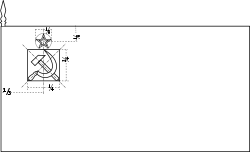
(c) I, Cmapm, CC BY-SA 3.0
The flag of the Soviet Union (1955-1991) using a darker shade of red.

Variant version of a flag of Japan, used between January 27, 1870 and August 13, 1999 (aspect ratio 7:10).
Olympijská vlajka
this is the flag of the Soviet Union in 1936. It was later replaced by File:Flag of the Soviet Union (1955-1980).svg.
Autor: Elmita Avanesi, Licence: CC BY-SA 3.0
Gervasio Deferr arriving at Barcelona's airport, after he won the gold medal in vault, in Athens 2004.
Flag of the Germans(1866-1871)



